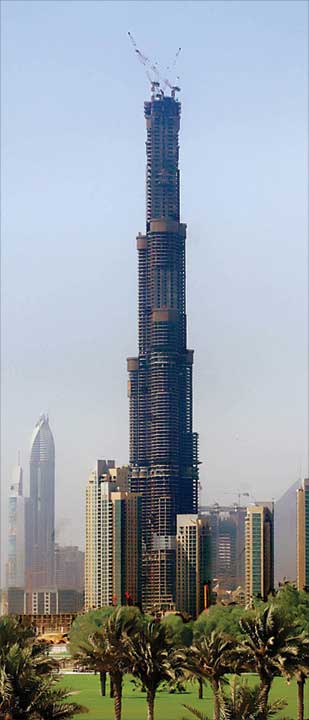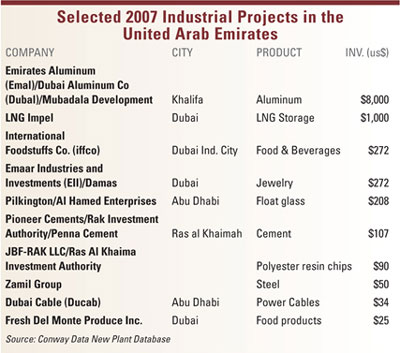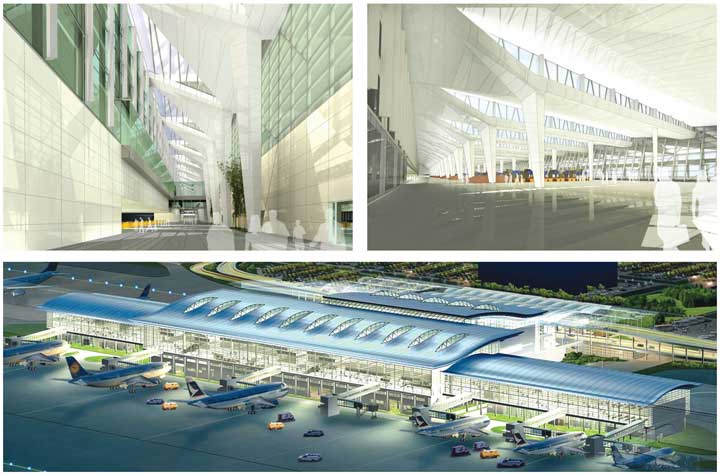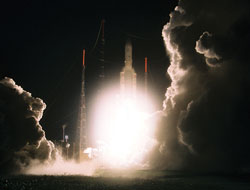Will the U.S. follow the world’s lead in turning to private-sector investment?
ssessing the world’s infrastructure needs is a daunting task. Even more daunting for governments is developing formulas to pay for
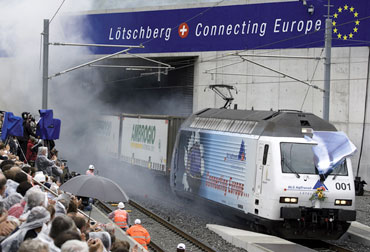
Switzerland is home to some of the world’s most striking recent infrastructure projects, including the Loetschberg Base Tunnel (left). Grand opening ceremonies were held in June for the tunnel, which will open to train traffic in December. It is a key part of a Rotterdam-Genoa corridor linking northern and southern Europe. The 21-mile (34.6-km.) tunnel took eight years to build at a cost of $3.5 billion.
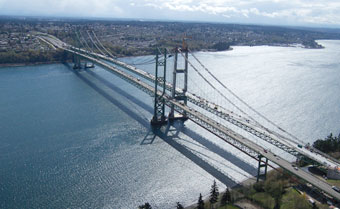
Tolls will pay $800 million of the $849-million cost of the Tacoma Narrows Bridge in Washington State. The new bridge (right) opened on July 16. The old bridge will be upgraded.
these massive construction projects.
“Infrastructure 2007: A Global Perspective,” released earlier this year by the Urban Land Institute and Ernst & Young, focuses on development of public-private partnerships as an important piece of the funding puzzle. The report says the U.S. will under spend approximately $1.6 trillion over the next five years.
“Transportation infrastructure is a huge issue globally,” says Chris Lawton, a partner in E&Y’s Global Real Estate Center in New York City. “In the U.S., it has a lot to do with upgrading of what already exists, but hasn’t been maintained. Globally, India and China are involved in a massive greenfield effort to build a whole raft of new roads.
“Most other governments are starting to access the private sector to invest in infrastructure, but the U.S. has been a bit slow to embrace the concept,” Lawton says. “That’s an area that needs to change. It requires education of the public as well. The public is quite skeptical of the private sector taking over toll roads. In the U.K., Canada and France, it has worked. It won’t solve everything, but it can be part of the solution.”
Lawton says the U.K.’s public-private partnership model for transportation projects has been in place for about 20 years. He says some projects have done better than others, but it is overall a good model. The same thing has happened in Australia. Eight private toll roads have been developed in Sydney the last 15 years or so.
The Aug. 1 collapse of the I-35W bridge in Minneapolis has drawn new attention to the U.S. infrastructure predicament, but it remains unclear if it will lead to a concerted effort to address the situation.
“You would like to think it would spur development,” Lawton says. “U.S. infrastructure is getting quite old and near the end of its life cycle. The need is great to invest in capital projects. The big problem is how to fund it.”
India’s Aerotropolis
India currently has approximately 125 airports, 11 of which are designated as international airports. That number will grow in the coming years with the opening of several greenfield airports.
India’s GMR Group, a construction firm specializing in infrastructure projects, is nearing completion of the greenfield Hyderabad International Airport, located in the Shamshabad area. Observers believe it will be the center of the country’s first aerotropolis as business parks, hotels and housing develop around it. Due to open for commercial traffic in March 2008, the airport will have an initial annual capacity of 12 million passengers and 100,000 tons of cargo. Projections call for ultimate figures of 40 million passengers and one million tons of cargo.
GMR believes the airport will become a major aviation hub. It is located in the center of India and within two hours flying time to all of the country’s major cities, and within three to five hours flying time to the major cities of the Middle East and Southeast Asia. The city, with a population of 7.3 million, is already known as India’s second Silicon Valley and is also a major biotech and pharmaceutical manufacturing center.
GMR also heads a consortium upgrading the Indira Gandhi International Airport in New Delhi. Both projects are being developed under the public-private partnership model. The approximate price tag for the modernization of the larger New Delhi airport is $2 billion, while the cost of the Hyderabad airport is estimated at $550 million.
Construction is also progressing toward an April 2008 opening for the first international airport in Bangalore. Cost of the project’s first phase is $288 million.
Developers of the greenfield Hyderabad Airport, due to open next March, believe it will become an aviation hub and could be India’s first aerotropolis.
Ports Grow in Rotterdam, Tangiers
Maasvlakte 2, the new port district of Rotterdam, is moving forward with the announcement that a consortium of terminal operator DP World and four shipping companies will operate the first container terminal. Construction on the terminal, which will have a capacity of around 4 million TEU, will begin in 2008. The terminal will be operational in 2013.
The terminal will have a 6,232-ft. (1,900-m.) deep-sea quay with a depth of 66 ft. (20 m.), a 1,804-ft. (550-m.) quay for inland shipping and feeder vessels and its own rail terminal with a connection to the Betuweroute, the Netherlands’ dedicated freight rail line that connects Rotterdam to Germany.
Also on the Port of Rotterdam’s busy construction agenda is construction of a slab terminal, an effort to strengthen its position in the handing of finished steel. The required 30-acre (12-hectare) site was created by filling in part of the Hartel Canal. In addition, the Port Authority is investing around €37.5 million ($51.3 million) in the construction of 1,640 ft. (500 m.) of quay wall and other public infrastructure, such as an access road. The terminal will be accessible for ships with a draught of up to 16.65 meters (55 ft.) and will be completed in April 2009.
French firm Bouyges Construction will build a second port in Tangiers, Morocco. Bouyges will head a consortium that will build breakwaters, ferry berths and a 104-acre (42-hectare) logistics area. Construction is expected to take two years. It will be part of the Tangier-Med port complex, which opened its first container terminal in July.
Bridge Work
Malaysia will be home to Southeast Asia’s longest bridge when the Penang Second Crossing Bridge opens in 2011. The $1.1-billion, 14-mile (22.5-km.) structure will link the mainland of Malaysia with the country’s northern Penang State. Malaysia expected to derive considerable economic benefits from the new bridge, including creation of job opportunities for the community in Penang’s satellite city of Batu Kawan and surrounding areas. It is also expected to mitigate traffic congestion on the existing Penang Bridge.
The new bridge, which will have dual carriageways and a motorcycle lane on the deck, is being built by China Harbor Engineering Co. and UEM Construction. The bridge’s most interesting feature is likely to be its two sightseeing platforms at its center that will include a rest and service area, retail outlets and car park bays.
More than 41,000 drivers paid the tolls to cross the new Tacoma Narrows Bridge on its opening day on July 16. Tolls will pay $800 million of the $849-million project’s cost. It is the longest classic suspension bridge built in the U.S. since New York City’s Verrazano-Narrows Bridge opened in 1964.
The new Tacoma Narrows Bridge was built parallel to and south of the 1950 Narrows Bridge. The older bridge is being improved as well, with bridge deck resurfacing and upgrading of bridge rail.
Europe is home to many recent spectacular bridge projects. One of the latest is a new bridge over the Bay of Cadiz in Spain (p. 698). Construction began earlier this year on the $412-million bridge, with completion set for September 2010.
Work is under way on Norway’s Hardanger Bridge, which will have a span longer than the Golden Gate Bridge. Hardanger will be a 1,310-m. (4,300-ft.) bridge spanning the Hardangerfjord in southwestern Norway, replacing a current ferry connection. Construction costs are estimated at $300 million for the bridge, which will be the longest suspension bridge in Norway.
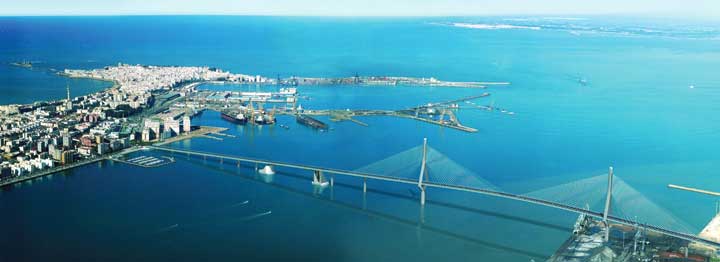
Spain’s Grupo ACS won the contract to build the new bridge over the Bay of Cadiz.
One Campus to Another
Go no further than the experience of Chinese telecom giant Huawei Technologies to discover the importance of science and technology parks as a bridge to the germination of corporate projects and jobs.
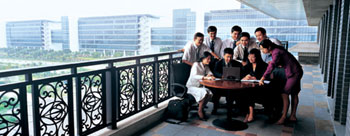
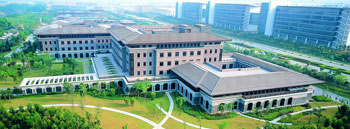
The campus of telecom company Huawei Technologies is a major component of the Shenzhen High-Tech Industrial Park (SHIP), established in 1996 and now comprising nearly 4.5 sq. miles (11.5 sq. km.). In 2003 the park’s industrial output value of US$11.8 billion represented 18 percent of Shenzhen’s entire industrial output – from a mere 0.6 percent of its land.
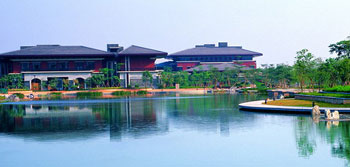
As such, they are fast becoming as central to community economic development infrastructure as the hard assets of roads, ports and bridges.
The company’s primary headquarters is located in the Shenzhen High-Tech Industrial Park (SHIP), established in 1996 and now comprising nearly 4.5 sq. miles (11.5 sq. km.). In 2003 the park’s industrial output value of US$11.8 billion represented 18 percent of Shenzhen’s entire industrial output – from a mere 0.6 percent of its land.
In addition to the many thriving enterprises on SHIP property, some 300 are in the incubation stage, cultivated in part by a consortium of 43 colleges and universities from China and abroad that SHIP calls its “Virtual University Park.”
In late June, Huawei stepped into another science park with a significant investment, choosing Andalusian Technology Park (PTA) in Malaga, Spain, to establish a 50-person global technical assistance center. The announcement came just three days after Huawei was awarded a High Speed Packet Access (HSPA) network expansion contract by Vodafone that will serve all the seven major cities in Spain, including Barcelona and Madrid. The Malaga project came about because of the involvement of PTA Director General Felipe Romera in the International Association of Science Parks (IASP), through which he had taken part in commercial missions to China.
“The assistance of the IASP to understand the Chinese market and to identify and contact key persons has been of the highest importance for our Technology Park and for the success of this project,” said Romera, whose 460-acre (186-hectare) park opened in 1992 and offers land through purchase or 75-year leases, in addition to incubators, “nests,” and other facilities designed to welcome companies at various stages in their growth.
Let’s Get Together
The trend of banding together is catching on among related associations. In June, the 17 Canadian member parks of the Association of University Research Parks did their part to further Canada’s competitiveness, creating their own formal association.
“In our opinion, university research parks provide the ideal environment for synergy and interconnectivity which are at the very heart of the technological clusters we have adopted to chart the future of the Montréal economy,” said Mayor of Saint-Laurent, Alan DeSousa, who is also in charge of economic development, sustainable development and the Montréal 2025 game plan for the City of Montréal’s executive committee. Among the leaders of the new group are Technoparc Saint-Laurent, Innovation Place in Saskatoon, Saskatchewan; and Vancouver Island Technology Park at the University of Victoria.
The move dovetails well with the efforts of the 186-facility network of the country’s National Research Council, known worldwide for its centers of expertise and its support for corporate projects.
One month earlier, the Association of University Research Parks had rallied for the cause of U.S. competitiveness, announcing its support for the “Building a Stronger America Act,” introduced in the U.S. Senate on May 11 by Senator Mark Pryor (D-AR).
If enacted, the act will authorize a federal grant program to be funded in the amount of $7.5 million per year (subject to appropriation), for the development of feasibility studies and plans for the construction or expansion of research parks. The legislation would also guarantee loans between $10 million and $50 million for building new parks and upgrading existing research and science park infrastructure.
“This legislation supports a critical component of U.S. competitiveness, which is building the infrastructure for innovation,” said AURP President Austin Beggs.
Far and Wide
IASP has 346 members in 73 countries, who altogether play host to approximately 120,000 companies. China holds a vast concentration of such parks, explaining why IASP’s Asia Pacific membership is double that of North America.
Most recently, in July, Asian developer Ascendas committed to creating one more, a $460-million IT park in Hangzhou, a city of 4 million in the south of the Yangtze Delta on mainland China. Expected to be the firm’s largest park in the country, the 106-acre (43-hectare) development will feature more than 8 million sq. ft. (752,250 sq. m.) of property at build-out. Like Ascendas’ other projects in Dalian, Nanjing and Xi’an, it will focus on attracting business process outsourcing operations, as well as R&D.
A recent survey of IASP members found that 78 percent had expanded their area or premises since their creation. Since 2000, more than 26 new parks have been created, setting a new standard for pace of launch.
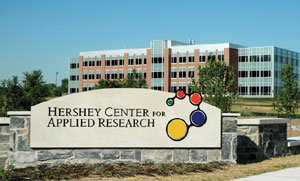
The first phase of the Hershey Center for Applied Research opened in May. The building houses the region’s only fully prepared wet lab.
Among other facts worth noting from the IASP:
• The largest number of Science and Technology Parks are concentrated in dense university areas. Sixty percent of the surveyed parks have more than five universities or higher education institutions within a 31-mile (50-km.) radius. Moreover, 21 percent have over 20 universities around them.
• Sixteen percent of parks have less than 162,000 sq. ft. (15,000 sq. m.) of buildings, while 36 percent have more than 861,000 sq. ft. (80,000 sq. m.) of buildings.
• Eighty-eight percent have at least one business incubator.
• More than a quarter of parks surveyed include residential areas or facilities next to the usual space for businesses and research facilities.
That last indicator is right in line with the vision of the 65-acre (26-hectare) Arizona Bioscience Park, part of a 356-acre (144-hectare) development in Tucson spearheaded by the University of Arizona that will include housing, hotel and commercial space. The project involves a unique swap, with KB Home exchanging that acreage for 124 acres (50 hectares) of the university’s existing Science and Technology Park, where it also will construct housing.
While the bioscience park could see some 3 million sq. ft. (278,700 sq. m.) of development in total, the existing park – one of some 130 research parks in North America – already has seen some 2 million sq. ft. (185,800 sq. m.) of just R&D, office and lab space developed on about a quarter of its 1,345 acres (544 hectares). That space is host to more than two dozen organizations.
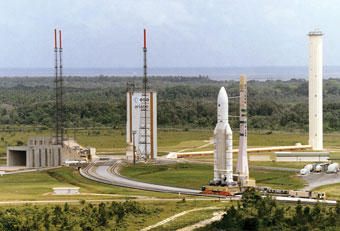
Transport and science infrastructure of a different sort is under way at Europe’s Spaceport in Kourour, French Guyana. A Soyuz launch base will open in 2008. The Spaceport specializes in satellite launches, taking advantage of its location near the equator to reduce energy required for geostationary orbit missions.
Another potential new member of IASP or AURP is blooming in Hershey, Pa., and also has a bio bent. In late May, officials celebrated the opening of the first building at the Hershey Center for Applied Research, at the same time welcoming its first tenant, Apogee Biotechnology Corp.
The firm will occupy space in an 80,448-sq.-ft. (7,474-sq.-m.) facility directly next door to Penn State Milton S. Hershey Medical Center and Penn State College of Medicine, both of which are also leasing space in the new building.
Plans call for up to 1.2 million sq. ft. (111,480 sq. m.) to be developed in up to 12 buildings.
“We’ve talked with potential tenants from Pennsylvania, outside Pennsylvania and even outside the United States,” said Hershey Center for Applied Research Executive Director Laura Butcher. “That’s the type of attraction the research park has. The companies are drawn to the facility because of the state-of-the-art lab facilities as well as access to Penn State College of Medicine’s research, equipment and facilities. The interest we’ve received thus far is also a testament to the quality of life and competitive cost of doing business that the Capital Region provides.”
AURP data released in early 2007 shows that the estimated U.S. total employment enabled by research parks is over 712,000 jobs, with an additional 90,000 total jobs provided in Canada.
The impact of the wages provided by these jobs is more than $31 billion annually. Overall, says the association, some 400 research parks exist in various stages of development.
